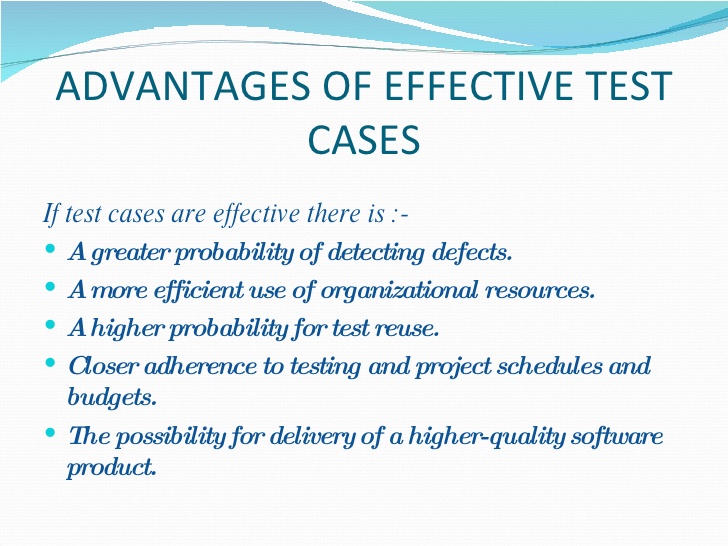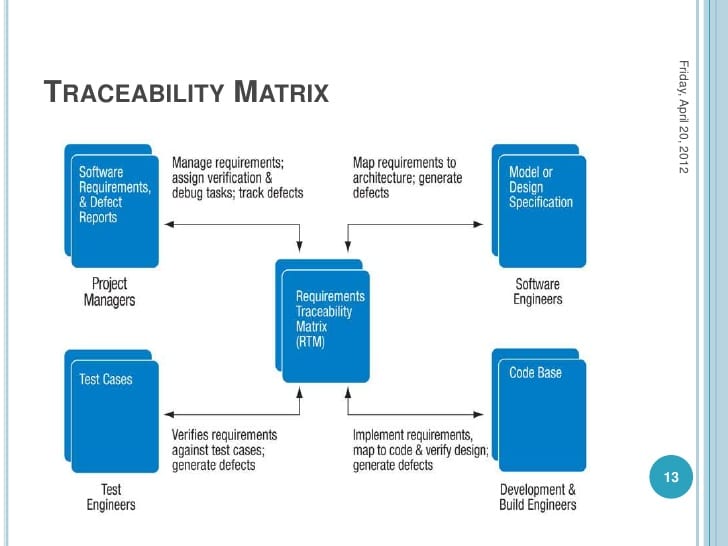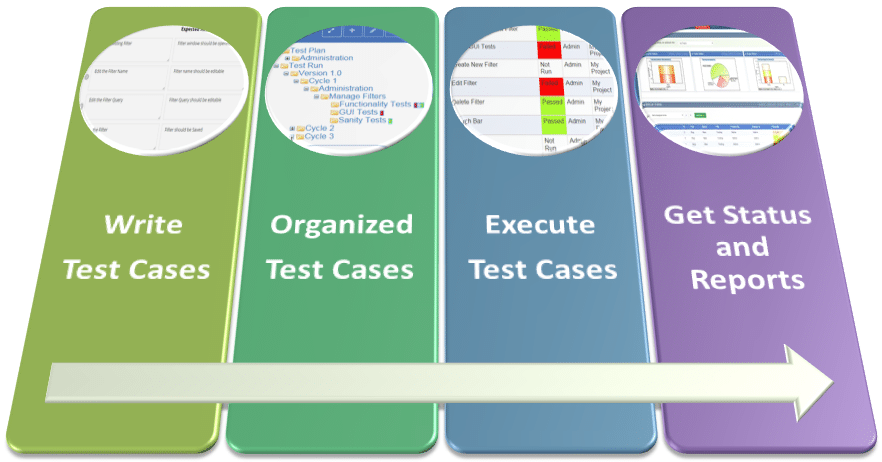In my previous blog, we have learned that “how to write test cases?” that was for beginner only. If you have started to write test cases, now the time is moving forward, so be ready for the next step!!!
Now, we will learn to write good test cases or effective test cases with the help of this blog. Writing test cases is the main role of any tester but writing effective test cases is the strength of testers and this is possible when only you have depth knowledge of requirement and domain. As a tester or QA person, we should know that How to write effective test cases? You don’t need too much your time or efforts to write a good test case! You just need to follow few guidelines…

A test case has a key role in the STLC phases and an important part of the test execution process!
Therefore, writing test cases that are effective and can be used again or more than once are very important; have a lot of time in the later stages of testing of the cases of good testing (actually!) If you correct it in the first attempt …
A good test case always contains a simple summary, a good description, point to point test steps, pre-conditions and expected results. As a good tester, you should write test cases in such a way that they are simple, presentable and easily understandable by everyone. You should have good Domain knowledge and test cases must be written according to end-user perspective.
There are two types of test cases Positive Test case and Negative Test Case, both are valuable but the most important factor is to cover all business and Functional requirements. In matters of effective test cases, the value of the business is included along with the project.

Jump to Section
Tips for writing Effective Blog Test Cases
As testing professionals, we work hard to test the applications point to point and find the issues and it can be very frustrating when the reviewer rejects our test cases. So, here we will discuss some helpful hacks that can help you write better test cases that will lead to higher quality software for your company.
Some great tips have been given to write this blog test case effectively!! We must clear about following things before writing test cases:
The goal of anything you do for the application is to meet customer requirements. A tester must create test cases keeping in mind the end user perspective, if we do the same then we can avoid the common mistakes which are user requirement specific.
2. Relevant Artifacts Attachments:
Sometimes we face problem to understand the test steps, in that case, if we have attached artifacts or designs to a particular test step, it will help to understand the flow. At the time of release or deployment, it will help in tracking the immense changes in our application.
3. Avoid Repetitions of Test Cases:
With the help of Test Automation, we can avoid repetition. It also adds value to the product and helps in reducing manual effort. Test cases should be written like that they can be re-used by any other team for any other project if needed.
Do not repeat test cases. If you are executing some other test case and your previous test case is needed for, call the test case by its test case id in the pre-condition column.
4. Test Coverage must be 100%:
Test coverage is a useful method for finding untested parts of an application. To have 100% test coverage, you should write test cases for all software requirements of complete module mentioned in the specification document.
To get hundred percent coverage you can use Traceability Matrix to ensure no functions/conditions is left untested. Requirement traceability matrix is the mapping between Testcases and the requirement and it will trace the functions and conditions that were left untested.

5. Defined and Easy Understandable:
Test cases should be easily understandable and to-the-point. No one is going to accept a test case that is overly complex and can’t easily be understood. If another Software Test Engineer executes the test cases, he/she should be able to understand it easily. Test cases have to be written in a simple language using the company’s template.
Create test cases that are as simple as possible. They must be clear and concise as the author of the test case may not execute them. Use assertive language like go to login page, enter data, click on this button and so on. This type of steps makes the easy understanding and you would be able to execute tests faster.
6. Make it reusable:
While creating new test cases, you should aware that the test cases will be reused. So if you need to reuse it future then you should be able to get it. In some circumstances, same test case might be reused in another scenario or a test step could be reused in another test case.

7. Repeatable and self-standing:
There is a possibility that a tester execute the test cases is not the same who was writing. So in that case also the test case should generate the same results every time.
8. Implement Testing Techniques:
It is actually impossible to check onto every possible condition in your software application. However, will get to know that how to select a few test cases with the maximum possibility of finding a defect, with the help of testing technique.
9. Boundary Value Analysis (BVA):
In Boundary Value Analysis, you can define the testing of boundaries for a specified range.
10. Equivalence Partition (EP):
In this technique, you can partition the range into equal parts which tend to have the same behavior.
11. State Transition Technique:
This method is used when software behavior changes from one state to another following particular action.
12. Error Guessing Technique:
In this technique, we guess the error that may arise while testing.Actually, this is not a formal method and we can follow this if we have good experience with the application.
13. Be your own critic:
After covering all the test cases for a scenario, we should review once more them from a tester point-of-view, not as a test case writer.
14. Stay organized:
In general, there are spreadsheets is used to manage test cases using. But it creates difficulty when the number of test cases increases, and inefficient for the team. Today, there are many software solutions that can help the testing team to better manage all the test cases in one place and organize well. In general, the company manages test cases using spreadsheets which is not a good practice, it becomes extremely difficult to manage these and also the efficiency of team decreases. So avoid it we have many software solutions that can help to manage and organize all the test cases in one place. We can get the help of Test Management Tool for test case management.
15. Test Cases must be identifiable:
In order to identify test case id’s easy while identifying a software requirement or while tracking defects at a later stage, it is advised to name the test case id with an easy or related name.
16. Peer Review:
In peer review, our test cases are reviewed by our colleagues. Your peers can uncover defects in your test case design, which you may easily miss.
17. Maintenance and Updates:
It is a good practice to update test cases according to the newly introduced changes in the requirements. It’s of critical to make sure that your existing test cases are always updated as per the new requirements before starting new test cases.

- COVID-19: How We Are Dealing With It as a Company - March 23, 2020
- Agile Testing – The Only Way to Develop Quality Software - February 8, 2019
- How to Perform System Testing Using Various Types Techniques - May 16, 2018


